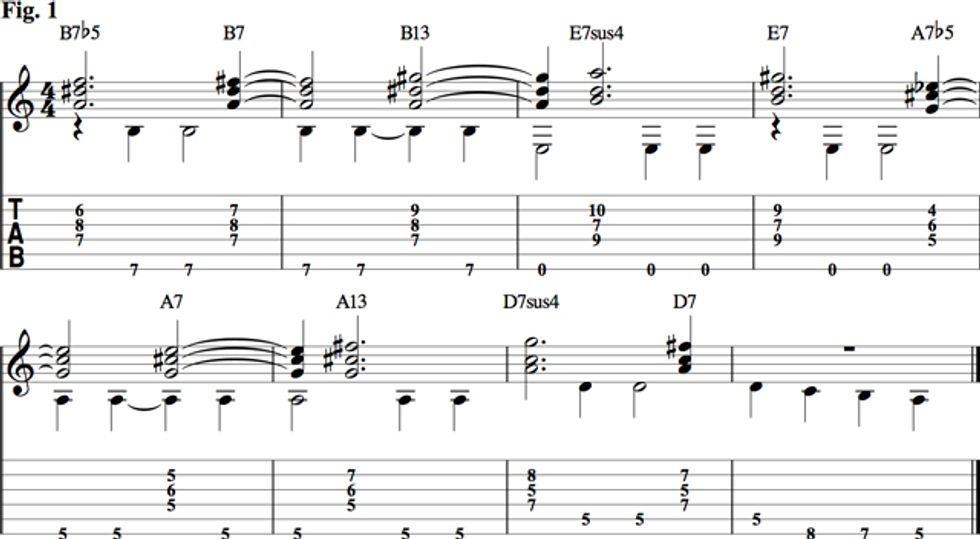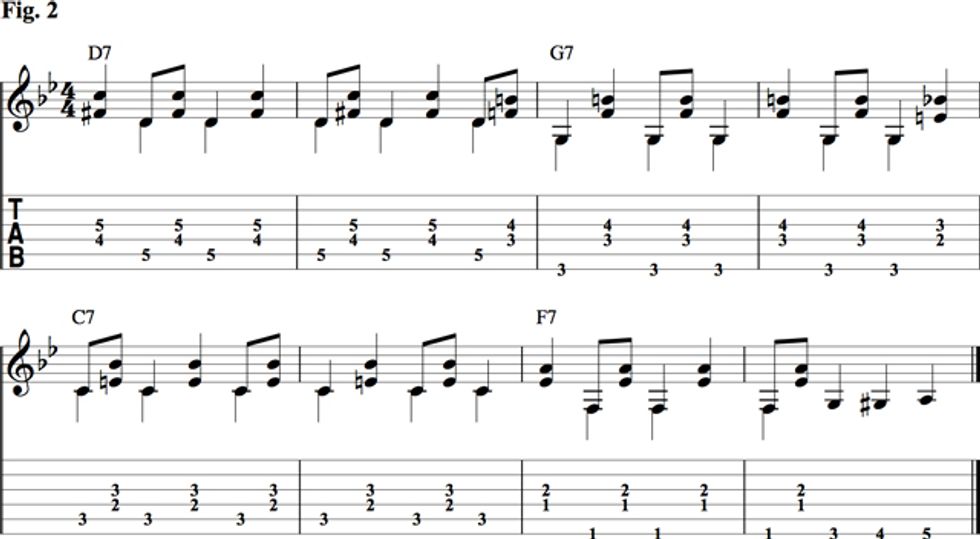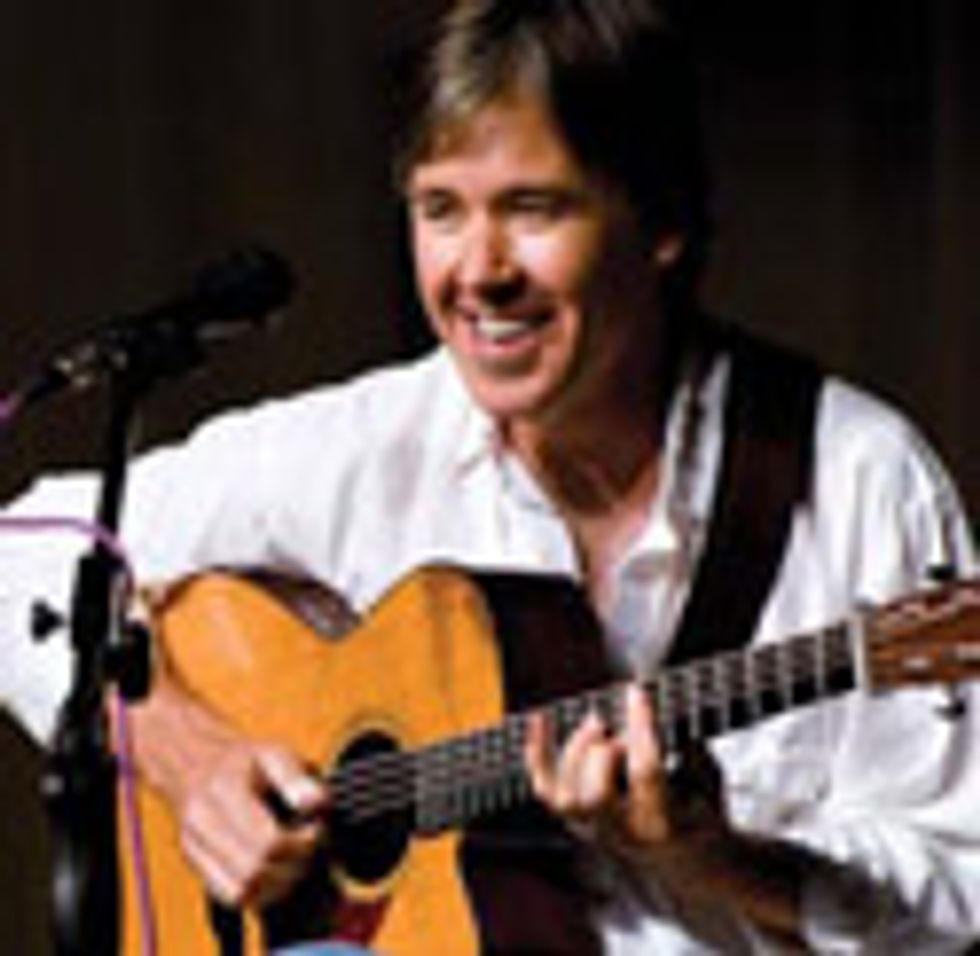Chops: Intermediate
Theory: Beginner
Lesson Overview:
• Understand the chords in the “Rhythm” changes bridge.
• Play ideas that incorporate “three-over-four” figures.
• Develop a stronger sense of internal time.
Click here to download a printable PDF of this lesson's notation.
I’ve heard people speak of a steady heartbeat being internally connected to having a great sense of rhythm. It sounds logical enough to me. Think about it: If you don’t have a steady heartbeat with a normal rhythm, how could you even identify with a steady beat of music when you’re practicing? All the metronomes in the world can’t change what is happening inside your chest.
I don’t have, and never have had, two regular heartbeats in a row in my whole life. But when I started to hear people speak of the internal rhythm versus the external rhythm, it really made me stop and think—maybe there’s something to this concept. I used to practice with a metronome so much that I drove my first wife nuts, my brothers nuts, and guys I was on the road with nuts. I took a lot of ribbing because I always had a metronome going.
About two years ago I had a pacemaker/defibrillator put in my chest with lots of wires running into my heart. I was kind of excited because I thought about my issues with finding just the right spot in the “pocket,” and I thought a pacemaker would be the “end all” of all my problems. Well, the doctors implanted the pacemaker and after I healed up, I sat down with my guitar and began to play knowing that all my issues with rhythms would be instantly fixed.
The first day went by and I didn’t notice any big changes. The second day—same thing. On the third day, there was still no great internal sense of rhythm. Damn it! I was so excited about finally having it all come together.
But then I got it. Here was my solution, the metronome. I’d been working with it for years and was already developing a great sense of rhythm the old-fashioned way—by working at it. I just thought that something magical would happen and I would feel something inside of me after the pacemaker was installed. Nope. Not gonna happen, no way, no how. Nothing beats playing along with old records by Al Green or Aretha Franklin or anything else that is played by really good musicians ... and a metronome.
So this time, I’m going to give you some examples from an arrangement I did of George Gershwin’s “I Got Rhythm.” I came up with this after having some rhythm issues with my heart that put me in the hospital many years ago. I thought it would be a nice little inside joke to have some rhythm games going on within this tune. Because of copyright issues, I can’t print the whole arrangement, but these two examples will set you on your way to playing your own rhythm games.
For the tune’s intro, I play the chords from the bridge. In the key of G, those chords are B7, E7, A7, and D7. I’ve added a simple melodic line to those basic chords to make it a little more interesting. I’m doing something that is called a “three-against-four” figure. That means that although the song is in 4/4 time, I’m playing groups of 3/4 time within or against it. So for every three measures, I’m playing four groups of three notes.
Many folks do this kind of thing naturally, but if you are not one of those folks, then count it out. It’s simple math. There are a lot of ways to look at playing these rhythms, but I think what’s important is that you take the time and internalize them so you no longer have to think about it. You want to get to a reactive state where you simply play this rhythm and it comes out naturally.

During the tune I modulate to the key of Bb, and when I get to the bridge during this key, I reintroduced the three-against-four idea. This one is a bit more exciting than the one that opens the tune (as it should be in a good arrangement), because at this point I’ve made the melody quite clear, and I’m planning to return to the melody again when I modulate back to the key of G.

So listen to the examples I’ve recorded for you. I’ve played each one slowly a few times, and then played them up to tempo. And remember to break out your metronomes, because if a guy with a heart as messed up as mine can develop good time, what’s your excuse? If you want to check out these rhythms within the tune, you can get them on my CD The Santa Rita Connection from my website, or you can always drop 99 cents on iTunes.



























